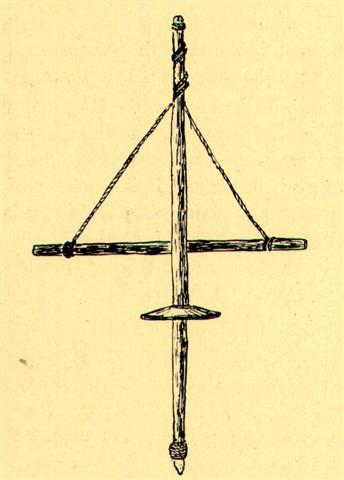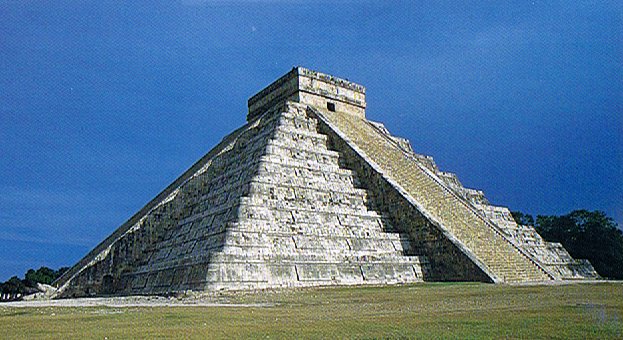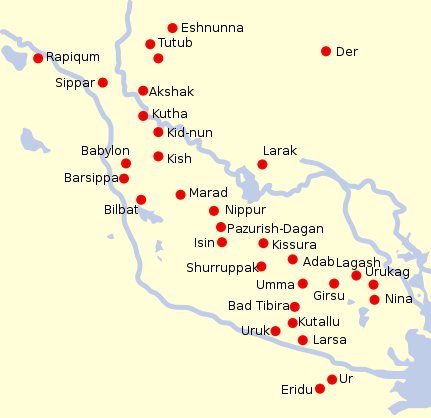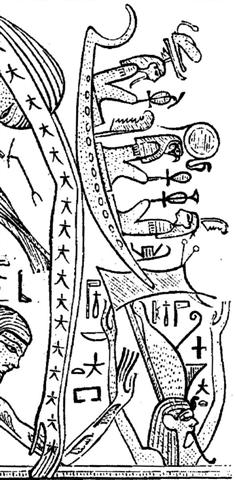120. A time frame based on Betelgeuze rising with the Sun at the Julian equinox (84) makes good sense. We can take a shortcut from heliacal Polaris at glyph 183 on side b and jump from there to the beginning of the text on side a, homing in on its zero ('egg') position ( Ο) corresponding to heliacal Alchita with Sirrah close to the Full Moon.The distance from heliacal Polaris to nakshatra Sirrah was 157 (= 314 / 2) days = *183 (Alchita) - *26 (Polaris). Side a of the C text was designed to have nakshatra Polaris at its end with side b beginning where nakshatra Sheratan (the First Point of Aries) had been in Roman times, 27 precessional days earlier than in 1842 A.D., which I have assumed should be the baseline for the rongorongo texts, after having considered the Arab structure for 'the resting-places of the camels' (manazil): "In Arabia they were Al Nujum al Ah´dh, the Stars of Entering, and Al Ribātat, the Roadside Inns, although better known as Al Manāzíl al Kamr, the Mansions, or Resting-Places, of the Moon; manzil, in the singular, signifying the noonday halt of camel and rider in the destert. Readers of Ben Hur will recall this in connection with Balthasar, the Egyptian, at the meeting of the Magi in their search for Him 'that is born King of the Jews', after they saw 'his star in the east, and are come to worship him'." (Allen) Or we could count to heliacal Acrux:
... Lifting a huge doorstone, such as two and twenty good four-wheeled [22 * 4 = 88] wains could not have raised from the ground, he set this against the mouth of the cave, sat down, milked his ewes and goats, and beneath each placed her young, after which he kindled a fire and spied his guests. Two were eaten that night for dinner, two the next morning for breakfast, and two the following night. (Six gone.) But the companions meanwhile had prepared a prodigous stake with which to bore out the Cyclops' single eye; and when clever Odysseus, declaring his own name to be Noman, approached and offered the giant a skin of wine, Polyphemus, having drunk his fill, 'lay back', as we read, 'with his great neck bent round, and sleep that conquers all men overcame him.' Wine and fragments of the men's flesh he had just eaten issued forth from his mouth, and he vomited heavy with drink. 'Then', declared Odysseus, I thrust in that stake under the deep ashes, until it should grow hot, and I spake to my companions comfortable words, lest any should hang back from me in fear. But when that bar of olive wood was just about to catch fire in the flame, green though it was, and began to glow terribly, even then I came nigh, and drew it from the coals, and my fellows gathered about me, and some god breathed great courage into us. For their part they seized the bar of olive wood, that was sharpened at the point, and thrust it into his eye, while I from my place aloft turned it about, as when a man bores a ship's beam with a drill while his fellows below spin it with a strap, which they hold at either end, and the auger runs round continually ...
All these dates and numbers are necessary for us in order to secure the structure of the text. The glyphs can then be put in parallel with the stars by using a pair of the Old-Spider's nets, with its strings of right ascension days and declinations capturing all the 'flies'.
... A very detailed myth comes from the island of Nauru. In the beginning there was nothing but the sea, and above soared the Old-Spider. One day the Old-Spider found a giant clam, took it up, and tried to find if this object had any opening, but could find none. She tapped on it, and as it sounded hollow, she decided it was empty. By repeating a charm, she opened the two shells and slipped inside. She could see nothing, because the sun and the moon did not then exist; and then, she could not stand up because there was not enough room in the shellfish. Constantly hunting about she at last found a snail. To endow it with power she placed it under her arm, lay down and slept for three days. Then she let it free, and still hunting about she found another snail bigger than the first one, and treated it in the same way. Then she said to the first snail: 'Can you open this room a little, so that we can sit down?' The snail said it could, and opened the shell a little. Old-Spider then took the snail, placed it in the west of the shell, and made it into the moon. Then there was a little light, which allowed Old-Spider to see a big worm. At her request he opened the shell a little wider, and from the body of the worm flowed a salted sweat which collected in the lower half-shell and became the sea. Then he raised the upper half-shell very high, and it became the sky. Rigi, the worm, exhausted by this great effort, then died. Old-Spider then made the sun from the second snail, and placed it beside the lower half-shell, which became the earth ... The first snail became the Moon and the second (the bigger one) became the Sun. The Old Spider slept with the first snail in her armpit for 3 days before the Moon was ripe to be placed in the west - a distance corresponding to that from the Egg (Ο) to the Eye.
When the Sun rose in the east and the Moon was in the west she looked at him and her face became full (Hotu) - this fundamental fact was the basis for the nakshatra system of finding the position of the Sun in relation to the stars. The Sun was placed beside the Earth (in the lower half-shell). However, between the creation of the Moon and the creation of the Sun another creation had taken place, because the Earth could not be defined without its complementary contrast the Sea. Therefore the Sea was created by the salted sweat of the big worm, emitted when he opened the sky shell more than what had been accomplised by the charm repeated by the Old Spider. Time-space was cyclical and therefore the Sea was there also at the very beginning, before Old-Spider found the clam.
The Sky half-shell (in contrast to the lower half-shell which contained the salted Sea) was finally lifted very high by the big worm who then died (expired) because he was exhausted. This big worm could have been the Flying Serpent, because in Teotihuacan the place corresponding to the pyramid of Khufu was the pyramid of Quetzalcoatl:
We can guess Quetzalcoatl (Kukulkan) corresponded to the Milky Way river of unborn souls. ... From a religious point of view, the high regard for flies, whose increase or reduction causes a similar increase or reduction in the size of the human population, is interesting, even more so because swarms of flies are often a real nuisance on Easter Island, something most visitors have commented on in vivid language. The explanation seems to be that there is a parallel relationship between flies and human souls, in this case, the souls of the unborn. There is a widespread belief throughout Polynesia that insects are the embodiment of numinous beings, such as gods or the spirits of the dead, and this concept extends into Southeast Asia, where insects are seen as the embodiment of the soul ... ... Men's spirits were thought to dwell in the Milky Way between incarnations. This conception has been handed down as an Orphic and Pythagorean tradition fitting into the frame of the migration of the soul. Macrobius, who has provided the broadest report on the matter, has it that souls ascend by way of Capricorn, and then, in order to be reborn, descend again through the 'Gate of Cancer'. Macrobius talks of signs; the constellations rising at the solstices in his time (and still in ours) were Gemini and Sagittarius: the 'Gate of Cancer' means Gemini. In fact, he states explicitly (I,12.5) that this 'Gate' is 'where the Zodiac and the Milky Way intersect'. Far away, the Mangaians of old (Austral Islands, Polynesia), who kept the precessional clock running instead of switching over to 'signs', claim that only at the evening of the solstitial days can spirits enter heaven, the inhabitants of the northern parts of the island at one solstice, the dwellers in the south at the other ...
... Behind me, towering almost 100 feet into the air, was a perfect ziggurat, the Temple of Kukulkan. Its four stairways had 91 steps each. Taken together with the top platform, which counted as a further step, the total was 365. This gave the number of complete days in a solar year. In addition, the geometric design and orientation of the ancient structure had been calibrated with Swiss-watch precision to achieve an objective as dramatic as it was esoteric: on the spring and autumn equinoxes, regular as clockwork, triangular patterns of light and shadow combined to create the illusion of a giant serpent undulating on the northern staircase ...
The end of this mighty River of Souls was at Eridu:
... The Pythagoreans make Phaeton fall into Eridanus, burning part of its water, and glowing still at the time when the Argonauts passed by. Ovid stated that since the fall the Nile hides its sources. Rigveda 9.73.3 says that the Great Varuna has hidden the ocean. The Mahabharata tells in its own style why the 'heavenly Ganga' had to be brought down. At the end of the Golden Age (Krita Yuga) a class of Asura who had fought against the 'gods' hid themselves in the ocean where the gods could not reach them, and planned to overthrow the government. So the gods implored Agastya (Canopus, alpha Carinae = Eridu) for help. The great Rishi did as he was bidden, drank up the water of the ocean, and thus laid bare the enemies, who were then slain by the gods. But now, there was no ocean anymore! Implored by the gods to fill the sea again, the Holy One replied: 'That water in sooth hath been digested by me. Some other expedient, therefore, must be thought of by you, if ye desire to make endeavour to fill the ocean ...
The etymology of Canopus is probably close to that of 'canopy': "Canopy ... covering over a throne, etc. XIV (Wycl.). Late ME. canope, canape - medL. canopeum baldacchino, for L. cōnōpēum, -eum, -ium net over a bed, pavilion - Gr. kōnōpeîon Egyptian bed with mosquito curtains, f. kōnōps gnat, mosquito." (English Etymology)
|
|||||||||||||||||||||||||||||||||||||||||||||||||||||||||||||||||||||||||||||||||||||||||||||||||||||||||||||||||||||||||||||||||||||||||||||||||||||||||||||||||||||||||||||||||||||||||||||||||||||||||||||||||||||||||||||||||||||||||||||||||||||||||||||||||||||||||||||||||||||||||||||||||||||||||||||||||||||














